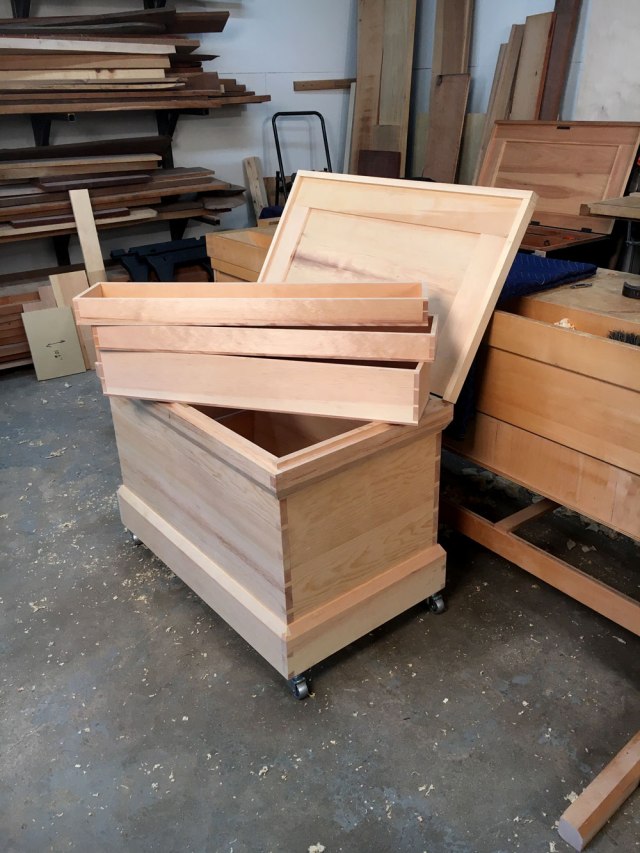
Every time I build a tool chest for a customer or during a class, someone asks me this question: Why are you going to paint over all those beautiful dovetails?
My answer: Because it’s the best finish for a tool chest.
Historically, most tool chests were painted. I think I’ve seen only a dozen that have avoided the brush. And most of those were shop queens. But that’s not why I paint all my chests. Blindly obeying the historical record isn’t my thing. While the historical record usually wins, I am willing to question it.
So here is my propaganda paper on paint.
- It is the most durable of all finishes. Good paint is nearly impervious to UV light. It forms a tough film that readily resists water, abrasion and other shop mishaps.
- Unlike other finishes, paint looks better (not worse) after abuse. This is opinion, but a battered, torched and gouged paint finish looks awesome.
- It is easily repaired – just add paint. With most modern finishes, repairing damage is difficult. Say you finish your chest with varnish or polyurethane. After a year of hard knocks and water damage it will look like something at a church tag sale. Fixing those clear film finishes is usually difficult. Fixing a paint finish is easy. Just add paint. (Note: Shellac, lacquer and wax are more easily repaired than varnishes, but they also are easily damaged.)
- Paint reveals the form. Many modern woodworkers love the look of natural wood. I agree that the wood’s figure can really enhance a piece. But the figure can also be distracting or detrimental to the form. Because of all the dovetails and wild figure, the form of the piece can get lost. Paint reveals the silhouette.
- A good paint job isn’t the easy way out. When I use clear finishes, I spray them on. So I can finish a big piece of furniture in a morning. Not so with paint. Choosing to paint a piece adds two or three days to the process. It takes skill and care to do it well.
- Expressed joinery isn’t the point. This is another opinion, but when I see lots of exposed dovetail joinery in a piece, I assume the maker is trying to make a point about his or her skill with a saw or a router. So I’ll step back, squint my eyes to blur them and look at the piece again. Are the dovetails the “bread and circuses” of the piece?
It’s your tool chest, so finish it the way you (or your customer) wants. But know that someday, someone is going to take a brush to cover over your crazed, flaked and dented French polish. And that is the moment when your true workmanship will be revealed.
— Christopher Schwarz